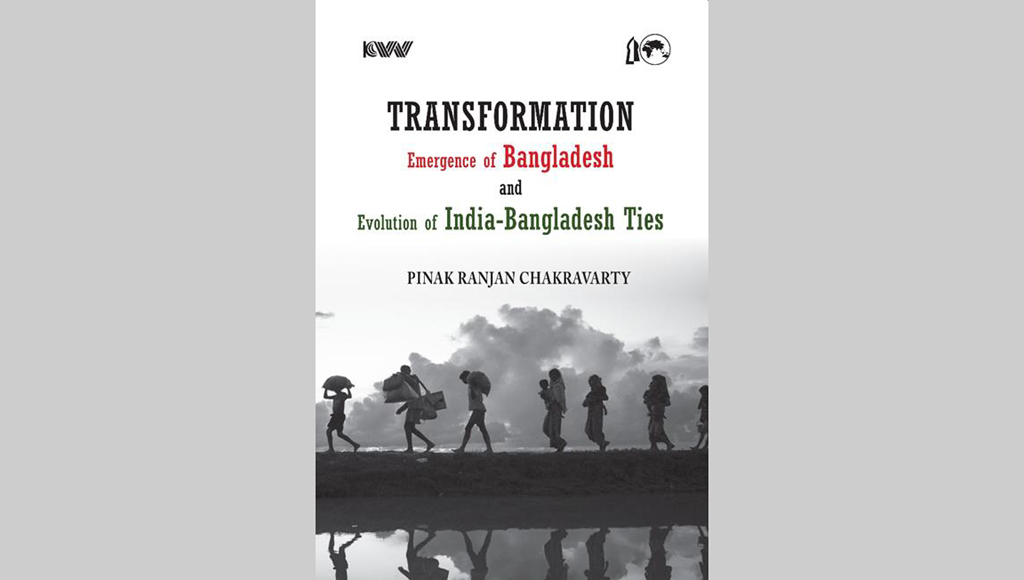
Ghulam Suhrawardi :
PINAK Ranjan Chakravarty is a visiting fellow of the Observer Research Foundation’s Regional Studies Initiative. The Research Foundation presents itself as an independent global think tank based in Delhi, India. It has branches in Chennai, Mumbai, and Kolkata. In this regard, it is also important to mention that Mukesh Ambani’s Reliance Group, a key ally of Modi and his sectarian BJP political party, is one of the key backers of the foundation.
Among his many important credentials, one of Pinak Ranjan Chakravarty’s key milestones was serving as Indian high commissioner to Bangladesh from 2007 to 2009. After Bangladesh, Chakravarty served as India’s ambassador to Thailand (2010–2011). Towards the end of his diplomatic career, Chakravarty served as special secretary (public diplomacy) in Delhi before being appointed secretary (economic relations) in the MEA. He retired from service in September 2013.
Chakravarty is a regular contributor to newspapers, journals, and books.
Pinak Chakravarty served in Bangladesh at a crucial time when several dramatic events took place. It was an election year when the country witnessed a de facto military coup and takeover in the guise of a caretaker government. Many argue, and not without justification, that Chakravarty and the country that he represented did not have a cosy relationship with the departing BNP and might have played on behalf of his government in the takeover and the inner workings of the transitional military government.
The then foreign minister and later India’s president, Pranab Mukherjee, stated in his book The Coalition Years that he had a close relationship with the then opposition leader, Sheikh Hasina of the Awami League, and that, if Hasina returned to power, he assured the then coup leader, General Moyeen U Ahmed, the Bangladesh army chief and leader of the coup who initially took both Begum Khaleda Zia, the departing prime minister, and Shiekh Hasina on corruption charges, that he would ensure no harm is done to the chief.
The 2008 election, which several observers had claimed was ‘free but not fair,’ brought Sheikh Hasina to power in 2009 and has remained in power ever since. Three more elections have followed since 2009, all of which were rigged, and many suspect with Indian help.
This is the backdrop of Pinak Chakravarty’s presence and the role he might have played then, as the high commissioner of India in Bangladesh, at a time when Pranab Mukherjee was India’s foreign minister who, by his own admission, played a key role in the internal affairs of Bangladesh at the time. This makes Pinak Ranjan Chakravarty’s book, Transformation: Emergence of Bangladesh and Evolution of India-Bangladesh Ties, an interesting, if not curious, read.
In his book, Chakravarty summarised the domestic development in Bangladesh and its impact on bilateral ties. He traces the history of Bengal, the partition, and the birth of Bangladesh as a new nation in the subcontinent. He also discussed the political turmoil that ensued with the assassination of Sheikh Mujibur Rahman, the first president of the independent nation. Mujib inspired the liberation struggle and is popularly called Bangabandhu (Friend of Bengal), who is also the father of the nation.
The book covers the period he served as the high commissioner of India in Bangladesh, 2007–2009, when Bangladesh was embroiled in a number of crises, including political intervention by the military, the conflict between secularism and Islamist nationalism (this coincided with west-initiated Islamophobia), the ethnic separatist Chakma revolt in the south-east of Bangladesh, and communal tensions, risking Bangladesh’s democratic journey and sustaining the amazing economic recovery that Bangladesh had by then achieved and was transforming itself from an ‘international basket case’ to a miracle economy.
The book duly acknowledges these political and economic dynamics and discusses the complex India-Bangladesh relations at great length. In particular, the book pays glowing tribute to prime minister Sheikh Hasina’s remarkable contributions to transforming and strengthening Bangladesh-India relations, arguing that with yet another five-year term (thanks to rigged elections and India’s blessings she has already served three terms since 2009), she will guide and cement further Bangladesh’s future policies and ties with India. The book’s twelve chapters mainly delve into India’s interests and perspectives on India-Bangladesh ties.
The book was launched on March 28, 2024, at the meeting room of the Observer Research Foundation, which included an interactive session in which several speakers, including the former foreign secretary of Bangladesh, Shahidul Haque, participated.
While recounting his own experiences in Bangladesh and the vital role India played in shaping the politics of Bangladesh, Chakravarty explains how these Indian interventions that occurred during 2007–2009 and secured and entrenched the Hasina government that served India’s interests are paying dividends even now. For example, Chakravarty elaborated on how India’s intervention in Bangladesh’s most recent elections, held on January 7, 2024, staved off America’s insistence on and demand for free and fair elections. Indeed, thanks to India’s forceful intervention, the overactive US ambassador Peter Hass, who enthusiastically canvassed for a free and fair election and supported, albeit indirectly, the opposition’s demand for a non-party caretaker government to hold elections, was eventually subdued and silenced, and his and the opposition’s demand for a caretaker government was never met.
The January 7, 2024, elections were held under the supervision of the government, and the opposition boycotted the election with the result that the ruling party has ‘won’ yet another election as they have since 2009, turning Bangladesh into a virtual one-party authoritarian system with all the paraphernalia of democracy and, as could be expected, an India-compliant state.
In the context of the above, when someone asked Chakravarty during the book launch whether the absence of the opposition in the election had not challenged its legitimacy, he answered, ‘If the opposition does not participate in the election, it does not negate the winner, the Awami League… and it is not fair to blame the winning party’, while carefully avoiding the context that dissuaded the opposition from participating.
Pinak Ranjan Chakravarty’s behind-the-scenes role during the critical military transition government of Bangladesh’s pre-2009 election is a point of contention with opposition leaders. The group also questions Indian president (then foreign minister) Pranab Mukherjee’s role in influencing the takeover by their favourite in Bangladesh, the compliant Awami League, whose leader Shiekh Hasina once publicly claimed, ‘India can never pay back the favours I have given.’
The opposition parties in Bangladesh feel, and quite rightly, that thanks to the role India played via the then-Indian high commissioner in Bangladesh, Pinak Ranjan Chakravarty, Bangladesh has since transformed itself from a sovereign state to a virtual vassal state of India, which, among other things, has put India’s interests above those of Bangladesh and shoved democracy in Bangladesh into oblivion.
People in Bangladesh are angry at India, which in recent times has given rise to a ‘Boycott India’ movement where people are being encouraged to stop buying Indian products, and it is working.
As a matter of fact, if Pinak Ranjan Chakravarty’s book has done one favour to the people of Bangladesh, it is that their suspicion that India’s not-so-invisible hands have been active since 2007 and counting in manipulating and catapulting a government of their choice, which in the process has entrenched India in Bangladesh economically and politically, has been revealed adequately and eloquently.
Ghulam Suhrawardi is the publisher of the South Asia Journal.
source : New Age









